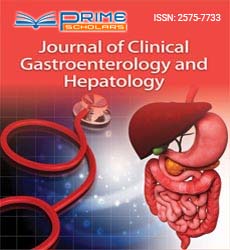Commentary - (2022) Volume 6, Issue 4
A Brief Study on Different Parts of Small Intestine and its Functions.
George Woolf*
Department of Internal Medicine, University of Hamburg-Eppendorf, Germany
*Correspondence:
George Woolf, Department of Internal Medicine, University of Hamburg-Eppendorf,
Germany,
Email:
Received: 30-Mar-2022, Manuscript No. IPJCGH-22-13066;
Editor assigned: 01-Apr-2022, Pre QC No. IPJCGH-22-13066 (PQ);
Reviewed: 15-Apr-2022, QC No. IPJCGH-22-13066;
Revised: 20-Apr-2022, Manuscript No. IPJCGH-22-13066 (R);
Published:
27-Apr-2022, DOI: 10.36648/2575-7733.6.4.16
Description
The small digestive system or little inside is an organ in the
gastrointestinal lot where the majority of the retention of supplements
from food happens. It lies between the stomach and
internal organ, and gets bile and pancreatic juice through the
pancreatic conduit to help with absorption. The small digestive
tract is around 18 feet (6.5 meters) long and folds ordinarily to
fit in the mid-region. In spite of the fact that it is longer than
the internal organ, it is known as the small digestive tract since
it is smaller in distance across.
The small digestive tract has three particular districts - the duodenum,
jejunum, and ileum. The duodenum, the most limited,
is the place where groundwork for ingestion through little
finger-like projections called villi begins. The jejunum is particular
for the assimilation through its coating by enterocytes:
little supplement particles which have been recently processed
by catalysts in the duodenum. The principle capacity of the ileum
is to assimilate vitamin B12, bile salts, and anything results
of absorption that were not consumed by the jejunum.
Notwithstanding the small digestive system’s notable capacity
of supplement assimilation, the small digestive system additionally
assumes a significant part in supplement detecting.
Like taste sensors seen on the tongue, GPCR-coupled supplement
sensors are communicated all through the gastrointestinal
epithelium and answer supplements found in the lumen.
These taste receptors answer explicit ligands, like processed
carbs, fats, and proteins. The actuation of supplement sensors
in the digestive system considers the enlistment of flagging
pathways required for the stomach related framework to
handle a convergence of supplements. Such cycles incorporate
those connected with glucose homeostasis and satiety.
Gastrointestinal stromal growths (GISTs) address 1% of essential
gastrointestinal tumors.The stomach is the destination of
most noteworthy incidence,followed by the small digestive
tract. Metastatic spread of GIST can happen by means of haematogeneous
and lymphatic courses .Liver and peritoneum are ordinary destinations for metastases.They seldom metastasise
outside the stomach depression particularly the lung.The reason
for this work is to report an instance of a gastrointestinal
stromal cancer of small digestive system with pneumonic limitations
as it is an inhabitual show.
The small digestive tract is really the longest fragment of the
gastrointestinal parcel - the long, constant pathway that food
goes through your stomach related framework. In the small digestive
tract, food is separated into fluid and a large portion of
its supplements are ingested. The waste is given to the internal
organ.The small intestine is coiled inside the lower abdominal
cavity beneath the stomach.The duodenum is the primary section
of the small digestive system, and the stomach discharges
food into it. Food enters the duodenum through the pyloric
sphincter in sums that the small digestive tract can process. At
the point when full, the duodenum flags the stomach to quit
exhausting. The duodenum gets pancreatic compounds from
the pancreas and bile from the liver and gallbladder. These liquids,
which enter the duodenum through an opening called the
sphincter of Oddi, are significant in supporting assimilation and
retention.
The jejunum and ileum make up the remainder of the small
digestive system and are situated underneath the duodenum.
These pieces of the small digestive system are generally answerable
for the retention of fats and different supplements.
Stirring developments work with retention. Ingestion is likewise
improved by the huge surface region comprised of folds,
villi, and microvilli. The gastrointestinal divider is lavishly provided
with veins that convey the consumed supplements to the
liver through the gateway vein.
Acknowledgement
None.
Conflict of Interest
Authors declare no conflict of interest.
Citation: Woolf G (2022) A Brief Study on Different Parts of Small Intestine and its Functions. J Clin Gastroenterol Hepatol. 6:16.
Copyright: © Woolf G. This is an open-access article distributed under the terms of the Creative Commons Attribution License, which permits unrestricted use, distribution, and reproduction in any medium, provided the original author and source are credited.

